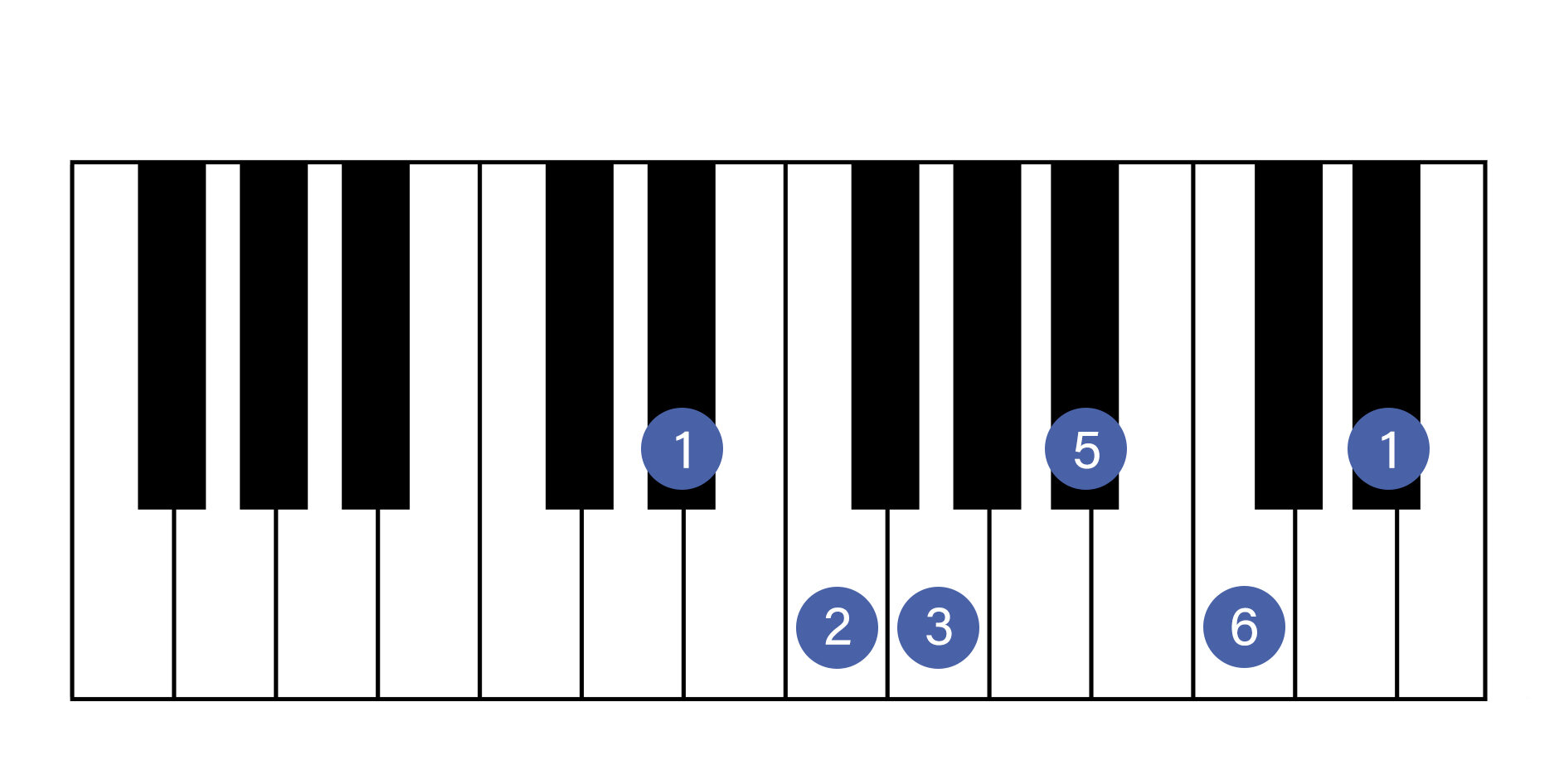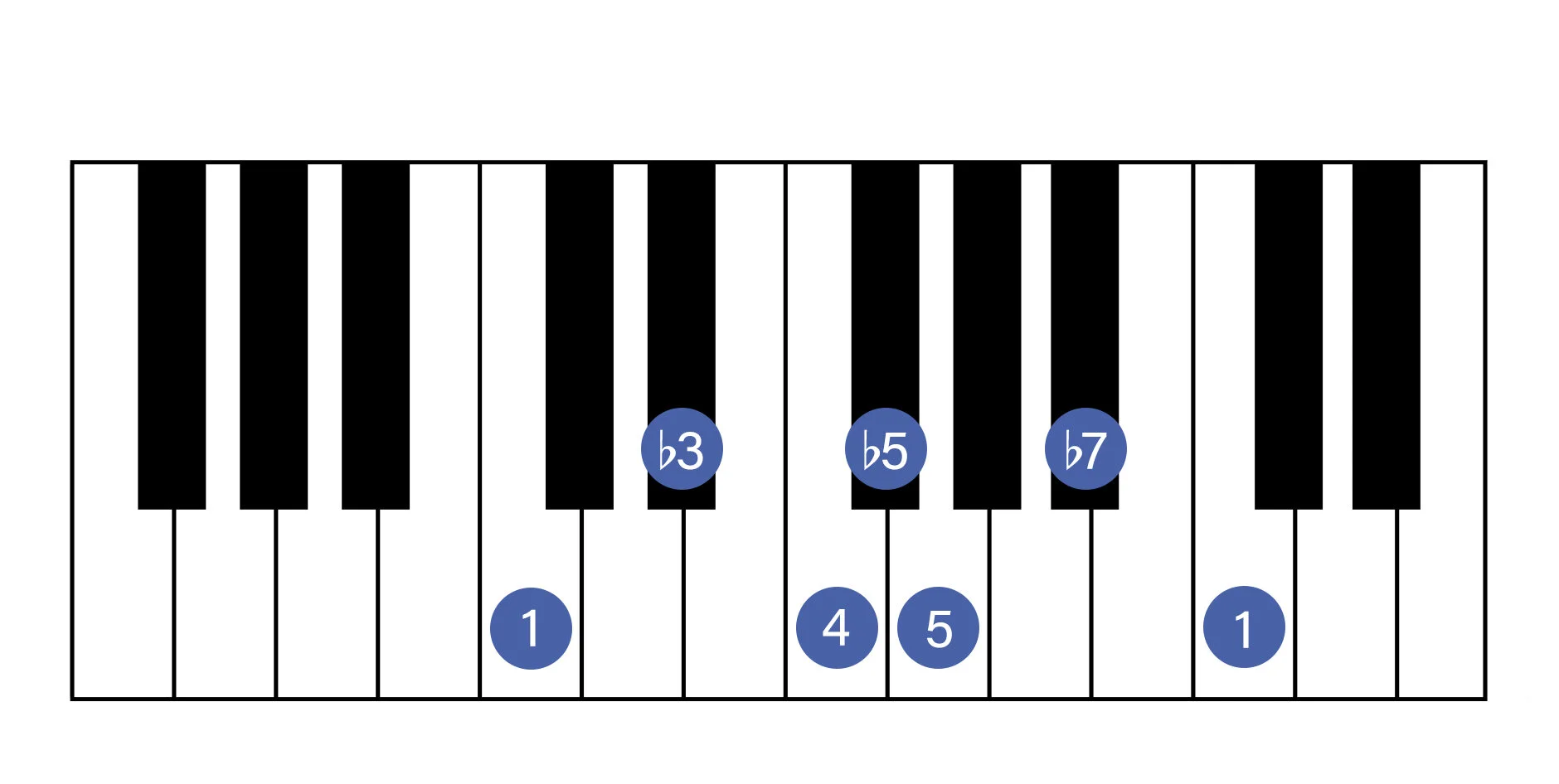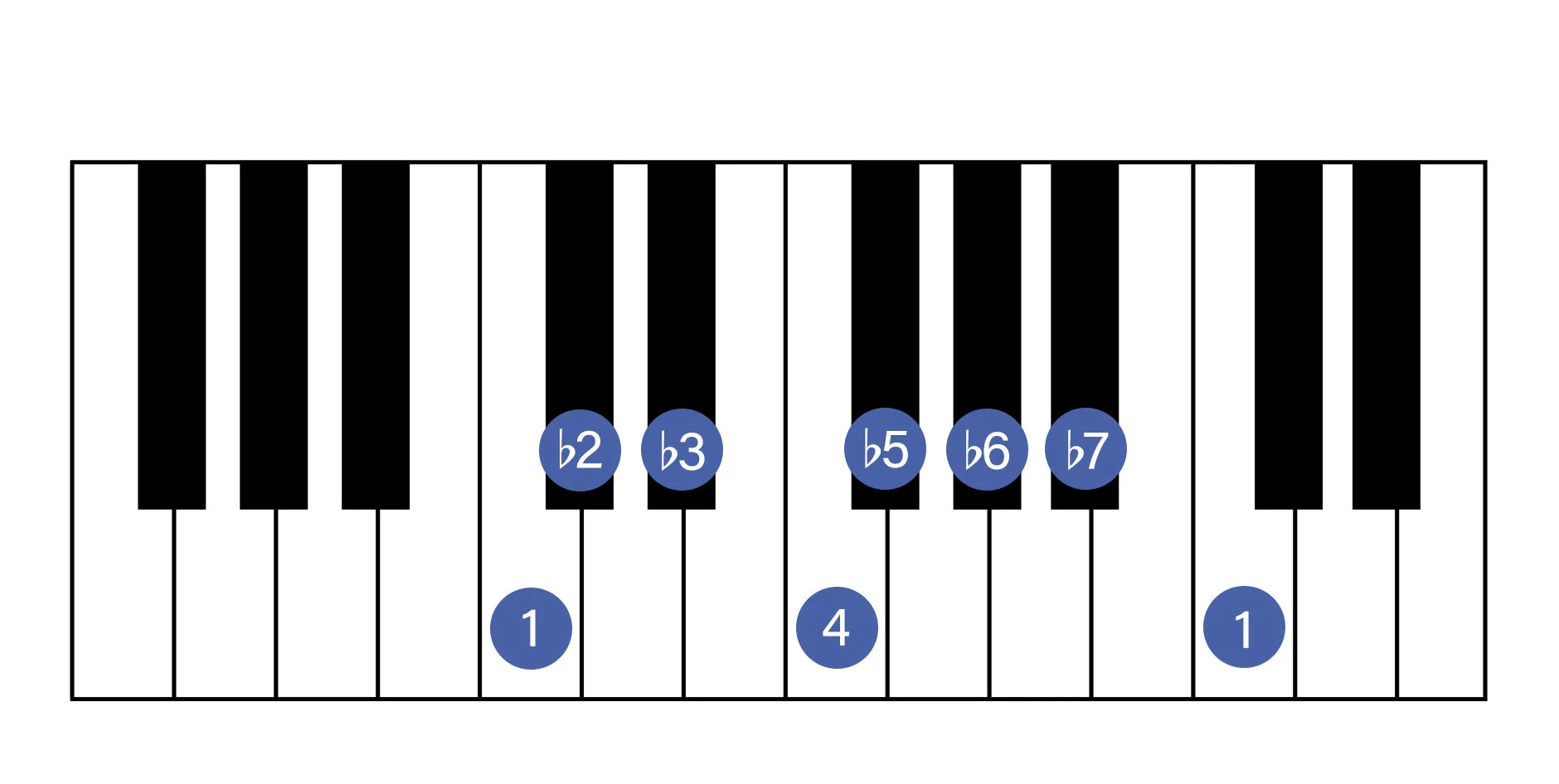How To Learn Jazz Scales
After the Major, Minor, and Chromatic Scales, some of the most important beginning jazz scales include Pentatonic Scales, Blues Scales, and the Modes of the Major Scale. I’ll discuss the Pentatonic and Blues Scales first. Then, we’ll get into the Modes of the Major Scale.
If you’re not familiar with Intervals such as Whole Steps and Half Steps or Major, Minor, and Chromatic Scales, take a look at my discussions of the Major & Chromatic Scales and the Minor Scales first. These discussions are located in the resources tab.
Pentatonic and Blues Scales
The Blues Scales are closely related to the Major and Minor Pentatonic Scales, which are based on the Major Scale. If you’re not familiar with the Major Scale, take a look at my discussion of that first. It’s located in the resources tab.
Pentatonic Scales
The Major Scale has 7 Notes, so it’s called Heptatonic. All Pentatonic scales have only 5 Notes (which is why they are called Pentatonic). Two of the most common Pentatonic scales are the Minor Pentatonic scale and the Major Pentatonic scale. There are other kinds of Pentatonic scales, but they are outside the scope of this discussion.
Major Pentatonic Scale
The Major Pentatonic scale is made up of 5 of the 7 notes in the Major Scale. The Major Pentatonic scale degrees in relation to the Parallel Major Scale are shown below. An explanation of representing Scale Structure as Scale Degrees in relation to the Parallel Major scale is given on my page discussing Minor Scales. The Major Pentatonic scale in the Key of C Major is shown below in the diagram of the piano keyboard.
Major Scale Degrees: 1 2 3 4 5 6 7 (1)
Major Pentatonic Scale Degrees: 1 2 3 5 6 (1)
Minor Pentatonic Scale
Like the Major Pentatonic scale, the Minor Pentatonic scale is also made up of 5 notes. In comparison to its Parallel Major scale, the Minor Pentatonic scale has two flatted notes: Scale Degree 3 and Scale Degree 7. The Minor Pentatonic Scale Degrees in relation to the Parallel Major scale are shown below. The Minor Pentatonic scale in the Key of C Major is shown below in the diagram of the piano keyboard.
Major Scale Degrees: 1 2 3 4 5 6 7 (1)
Minor Pentatonic Scale Degrees: 1 b3 4 5 b7 (1)
Relationship Between the Major and Minor Pentatonic Scales
The Major Pentatonic scale in the Key of Eb is shown below in the diagram of the piano keyboard.
As you can see by comparing Piano Keyboard Diagrams for the Eb Major Pentatonic scale (below) and the C Minor Pentatonic scale (above), these two scales would be called Relative Scales because they Contain the Same Notes but Start on Different Notes. An explanation of Relative vs. Parallel scales is given on my page about Minor Scales.
Blues Scales
There are a number of different scales that might be called Blues scales. Two of the most common, though, are commonly referred to as the Major Blues scale and the Minor Blues scale, or sometimes just as the Blues Scale. These two scales are very similar to the Major and Minor Pentatonic scales. As with the Major and Minor Pentatonic scales, the Major and Minor Blues scales can be called Relative scales because they Contain the Same Notes but Start on Different Notes.
Minor Blues Scale
The Minor Blues scale is made up of 6 notes, so it’s called Hexatonic. In comparison to the Minor Pentatonic scale, the Minor Blues scale has one additional note - a Flatted 5th (or Sharp 4th). This extra note is sometimes referred to as a Blue Note. The term Blue Note can be used in different ways. In this case, it indicates that the note is “Outside,” or not contained in, the pool of notes you might expect to hear in a more traditional context. The term Blue Note here also suggests that the note has a special character or expressive quality.
The Blues Scale Degrees in relation to the Parallel Major scale are shown below. For comparison, the Minor Pentatonic Scale Degrees in relation to the Parallel Major Scale are shown below. The Blues scale in the Key of C Major is shown below in the diagram of the piano keyboard.
Major Scale Degrees: 1 2 3 4 5 6 7 (1)
Minor Pentatonic Scale Degrees: 1 b3 4 5 b7 (1)
Minor Blues Scale Degrees: 1 b3 4 b5 5 b7 (1)
Major Blues Scale
As with the Minor Blues scale, the Major Blues scale is also made up of 6 notes. In comparison to the Major Pentatonic scale, the Major Blues scale has one additional note - a Flatted 3rd (or Sharp 2nd). As with the Minor Blues scale, this extra note is sometimes referred to as a Blue Note.
The Scale Degrees in the Blues scale in relation to the Parallel Major scale are shown below. For comparison, the Minor Pentatonic Scale Degrees in relation to the Parallel Major Scale are shown below. The Blues scale in the Key of C Major is shown below in the diagram of the piano keyboard.
Major Scale Degrees: 1 2 3 4 5 6 7 (1)
Major Pentatonic Scale Degrees: 1 2 3 5 6 (1)
Major Blues Scale Degrees: 1 2 b3 3 5 6 (1)
The 7 Modes of the Major Scale
There is 1 Mode for each of the 7 Scale Degrees of the Major Scale. Thus, there are 7 Modes of the Major Scale. Each Mode has a name and a Unique Interval Structure (a unique series of Whole Steps and Half Steps). The names of the modes come from Ancient Greece and the history of Greek language, music, and culture. Each mode of the Major Scale can be constructed as either Parallel or Relative to the Major Scale of the relevant key.
The 7 Modes Relative to the C Major Scale
The Seven Modes of the C Major Scale are shown below in order by Scale Degree. Each Mode shown below can be described as Relative to the C Major scale because they all Contain the Same Notes but each Mode Starts on a Different Note.
1st Mode - C Ionian: C D E F G A B (C)
2nd Mode - D Dorian: D E F G A B C (D)
3rd Mode - E Phrygian: E F G A B C D (E)
4th Mode - F Lydian: F G A B C D E (F)
5th Mode - G Mixolydian: G A B C D E F (G)
6th Mode - A Aeolean: A B C D E F G (A)
7th Mode - B Locrian: B C D E F G A (B)
The 7 Modes Parallel to the C Major Scale
The 7 Modes of the Major Scale Parallel to the C Major scale are discussed below. Each Mode discussed below can be described as Parallel to the C Major scale because they all Start on the Same Note (C) but each Mode Contains One or More Different Notes that differentiate it from the other Modes.
Ionian Mode and Scale
The 1st Mode of the Major Scale is the Ionian Mode. In fact, the Ionian Mode is really just another name for the Major Scale: They are the same thing.
Ionian Mode - Scale Degrees: 1 2 3 4 5 6 7 (1)
C Ionian Mode Notes: C D E F G A B (C)
Lydian Mode and Scale on the Piano
The Lydian Mode is the 4th Mode of the Major Scale. The Lydian Mode is unique in that it is the only mode that has a Raised Scale Degree (the scale degree is raised by aa half step) in relation to its Parallel Major Scale. The Lydian Mode has a raised 4th, also called a sharp 4th.
Lydian Mode Scale Degrees: 1 2 3 #4 5 6 7 (1)
C Lydian Mode Notes: C D E F# G A B (C)
Mixolydian Mode and Scale on the Piano
The Mixolydian Mode is the 5th Mode of the Major Scale. The Mixolydian Mode has a Flatted 7th Scale Degree in relation to its Parallel Major scale.
Mixolydian Mode Scale Degrees: 1 2 3 4 5 6 b7 (1)
C Mixoydian Mode Notes: C D E F G A Bb (C)
Dorian Mode and Scale
The Dorian Mode is the 2nd Mode of the Major Scale. In addition to a Flatted 7th Scale Degree as in the Mixolydian Mode, the Dorian Mode also has a Flatted 3rd Scale Degree in relation to its Parallel Major scale.
Dorian Mode Scale Degrees: 1 2 b3 4 5 6 b7 (1)
C Dorian Mode Notes: C D Eb F G A Bb (C)
Aeolian (Natural Minor) Mode
The Aeolian Mode is the 6th Mode of the Major Scale. In addition to Flatted 3rd & 7th Scale Degrees as in the Dorian Mode, the Aeolean Mode also has a Flatted 6th Scale Degree in relation to its Parallel Major scale. The Aeolian Mode is another name for the Natural Minor scale: They are the same thing.
Aeolian Mode Scale Degrees: 1 2 b3 4 5 b6 b7 (1)
C Aeolian Mode Notes: C D Eb F G Ab Bb (C)
Phyrigian Mode
The Phrygian Mode is the 3rd Mode of the Major Scale. In addition to Flatted 3rd, 6th, & 7th Scale Degrees as in the Aeolian Mode, the Phrygian Mode also has a Flatted 2nd Scale Degree in relation to its Parallel Major scale.
Phrygian Mode Scale Degrees: 1 b2 b3 4 5 b6 b7 (1)
C Phrygian Mode Notes: C Db Eb F G Ab Bb (C)
Locrian Mode and Scale
The Locrian Mode is the 7th Mode of the Major Scale. In addition to Flatted 2nd, 3rd, 6th, & 7th Scale Degrees as in the Phrygian Mode, the Locrian Mode also has a Flatted 5th Scale Degree in relation to its Parallel Major scale.
Locrian Mode Scale Degrees: 1 b2 b3 4 b5 b6 b7 (1)
C Locrian Mode Notes: C Db Eb F Gb Ab Bb (C)
Get Started Learning Jazz Piano
If you’re ready to start learning jazz, please get in touch at your earliest convenience. We can meet for piano lessons in White Plains, online piano lessons, or lessons in Westchester County as a whole, and I’d love to hear about your goals and ambitions.












